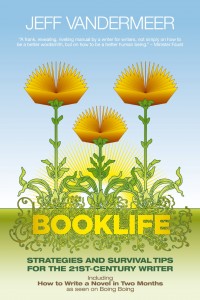Troy D. Smith is from Sparta, Tennessee. He received his Ph.D. from the University of Illinois, and teaches U.S. and American Indian history at Tennessee Tech. In addition to history, he writes short stories of all stripes, has written for several magazines, published poetry (but not lately), and writes western and mystery novels.
I’ve seen several articles lately that claim experience with role-playing games, such as Dungeons & Dragons, can make one a better author — giving future writers experience with plot and exposition, and especially characterization. I have remarked more than once that my job as series editor for Western Fictioneers’ Wolf Creek series makes me feel like a dungeon master (in a good way.) As I have been thinking about the RPG connection, though, I have concluded that something else helped (and continues to help) me far more.
The Myers Briggs personality sorter.
Many of you are no doubt familiar with the concept, modeled in part on the theories of pioneering psychiatrist Carl Jung. There are four basic personality “types,” each of them having four “subtypes,” for a total of sixteen. Each person is either E or I (extrovert or introvert), N or S (guided by intuition or senses), T or F (thinking or feeling), and J or P (judging or perceiving, which has a lot to do with how organized one is).
For over twenty years, I have used this basic guide to construct personalities for my principal characters. Following the formula (though not slavishly) helps me make sure my invented people “stay in character.” At some point you’ve probably read a book and encountered an action by the protagonist that left you saying “Wait a minute, that doesn’t sound like something fill-in-the- blank would say/do!” The Myers-Briggs method is too complicated to explain at length in this space, yet is easily mastered and understood. I have found it remarkably helpful.
I have two Wolf Creek characters: Charley Blackfeather, the Black Seminole army scout, and Sam Gardner, the town marshal. They are very different from one another, not only in background but in temperament.
Charley is an INFP, sometimes called The Healer or The Questor. INFPs are spiritual seekers, on a never-ending mission to search for the meaning of life and their place in it. They have deep wellsprings of emotion, but have trouble expressing them, and can therefore seem quite reserved. They are generally very easy to get along with, but are implacable when someone challenges their deeply-held principles. Their intuition can be uncanny. One of my favorite characters of those I’ve created, Alfred Mann from Bound for the Promise-Land, was an INFP; that novel was ultimately about his search for meaning.
Sam is an ESTP, sometimes called The Promoter. An ESTP is a person of action, not introspection. They make decisions quickly, and hate to be bored. They live in the moment and love to take risks. They hate having rules imposed upon them from above, but have a powerful set of internal values that they rarely violate, and which might make little sense to someone else. They tend to be flashy, and poor managers of resources. They are often charming, and can talk people into anything. Another of my own favorite characters, Champ Ferguson of Good Rebel Soil, is a very similar type: ESFP. He differs from Sam in that, as an F instead of a T, he is more sentimental and also more prone to anger. That novel was the story of how his passions, and penchant for living in the moment, carried him down a path to tragedy.
There is plenty of information on the web about Myers-Briggs; I also highly recommend Please Understand Me by David Kiersey, who makes the whole thing very accessible to laypeople. I swear by it — it can make your characters come to life in whole new ways.
What personality is your current protagonist?
